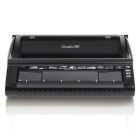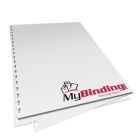Putting Together a Great Report
Putting together a high-quality report for work or school is a unique process, and the more thought and effort you put into it, the better off you will be. Here are a few things to consider when you are creating a report.
Why?
Like any project, you should have a clear idea of what you want to accomplish before you start working on the meat of your report. If you are working with other people, or have been assigned this report by a teacher or supervisor, meet with all involved parties to discuss the project in depth, brainstorm and take copious notes. When it's time to get down to writing, keep your goals in mind as you create an outline. Make sure that your narrative flows logically, and that you take your audience from point to point smoothly and seamlessly.
Who?
The next thing you will want to consider is who your audience is going to be. Are they somewhat familiar with your subject matter? Total newbies? Somewhat of a mixed bag? This will help you decide on what type of language you will want to use. For instance, if your audience is as up to speed as you are, you know that you can freely utilize insider-type jargon. But you need to be aware of when you will have to start some members of your audience out at square one. It is always a good idea to play to the least informed members of your audience, or to at least throw them a bone by way of explanation. It is your responsibility to inform, not to confuse.
What?
Now that you have planned your path, it's time to dig in. The more information you can gather on your topic the better. You may not use it all, but at least you yourself are as well informed as anyone. Please don't let Google do all the work here. Talk to your supervisor, your project partners, conduct interviews with authorities on your subject, or even talk to your friendly local librarian. Believe it or not, there is still useful and interesting information out there that is not yet on the internet.
When?
As in, when to end it? Unless you have been assigned a particular length of time to speak, this part is up to you. But of course, you will want to keep an eye to toeing the line between informative and tedious. The key is to make your points without relying on redundancy to do so. You should make sure that you include time to respond to questions, and if there are none, perhaps have some auxiliary material that you can provide to fulfill your time quota if need be.
How?
As in, how does it look? You should try to make sure that you report appeals to your audience on many levels, and this includes visually. Include graphics such as charts whenever possible, and in color if it fits your scope budget. Another thing to consider is the binding style you will use for the materials that you distribute. You can rely on the old tried and true 3 ring binder, or there are many other options out there that can give you different looks depending on what you are trying to accomplish. Some styles to consider are twin loop binding, spiral coils binding or thermal binding for a permanent-hardcover feel.









